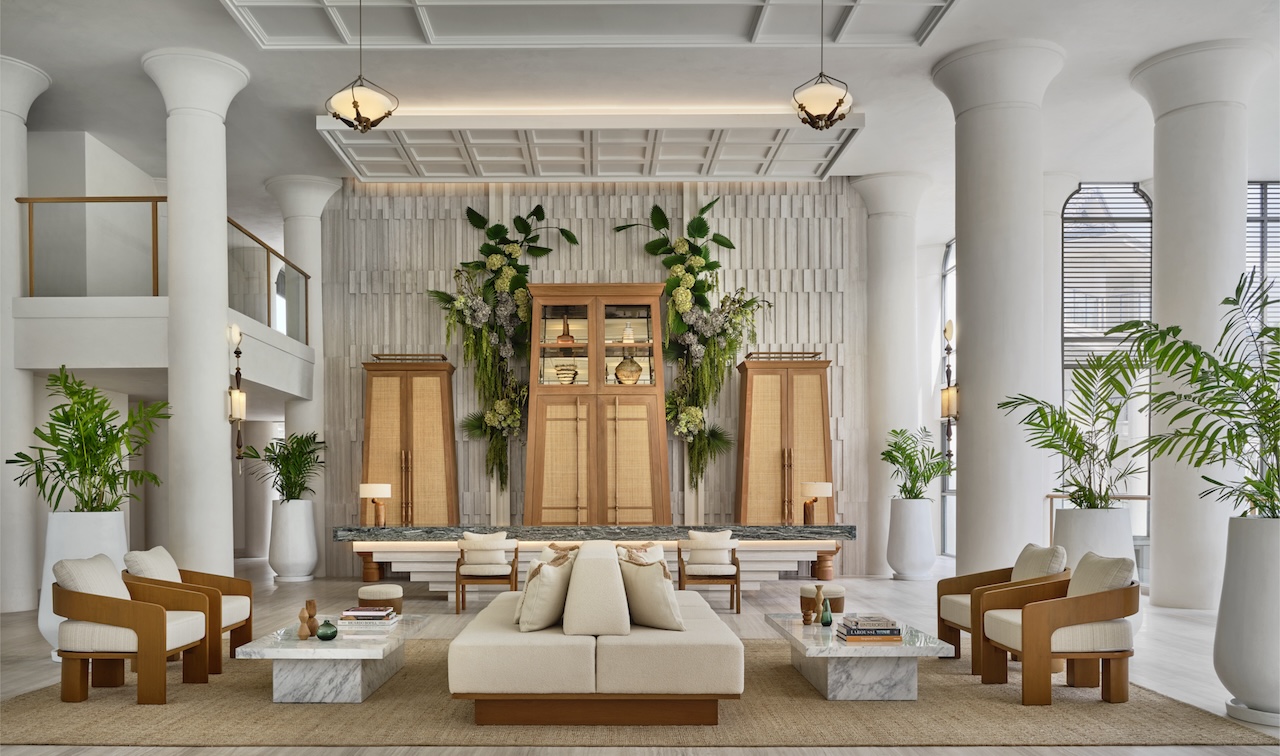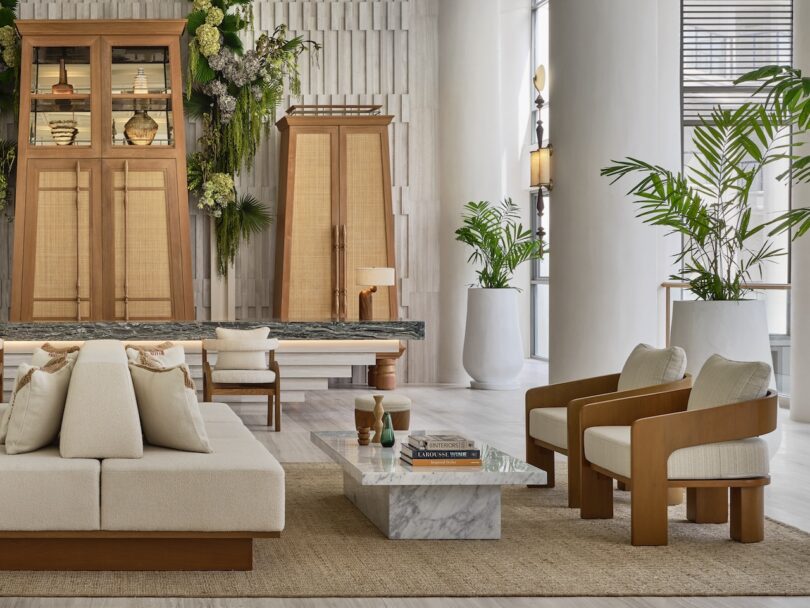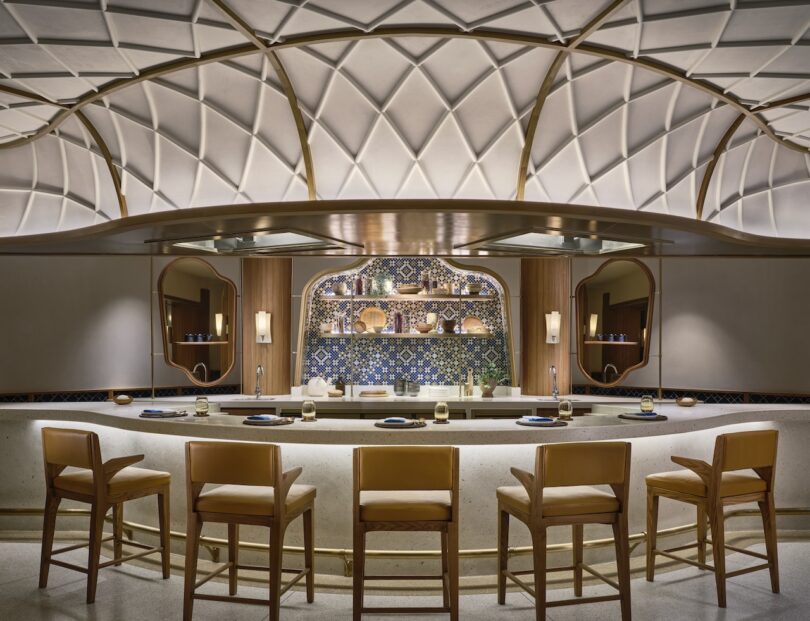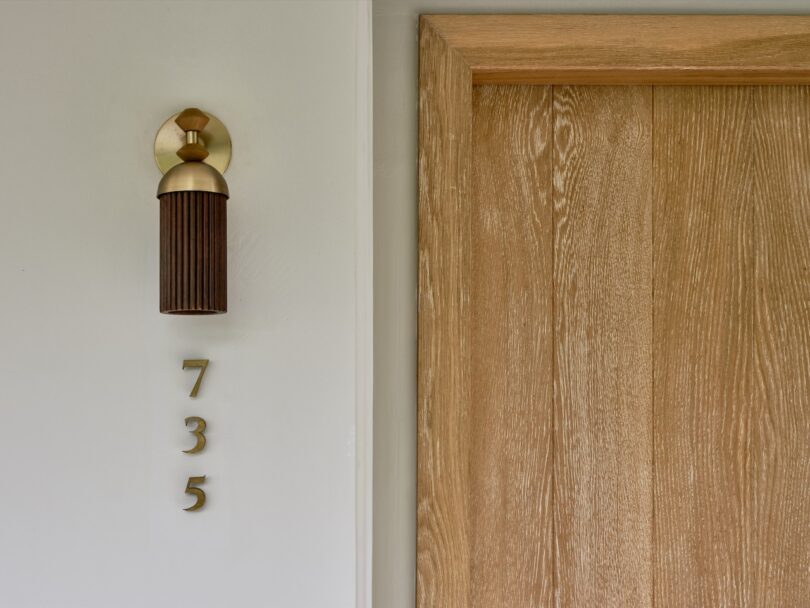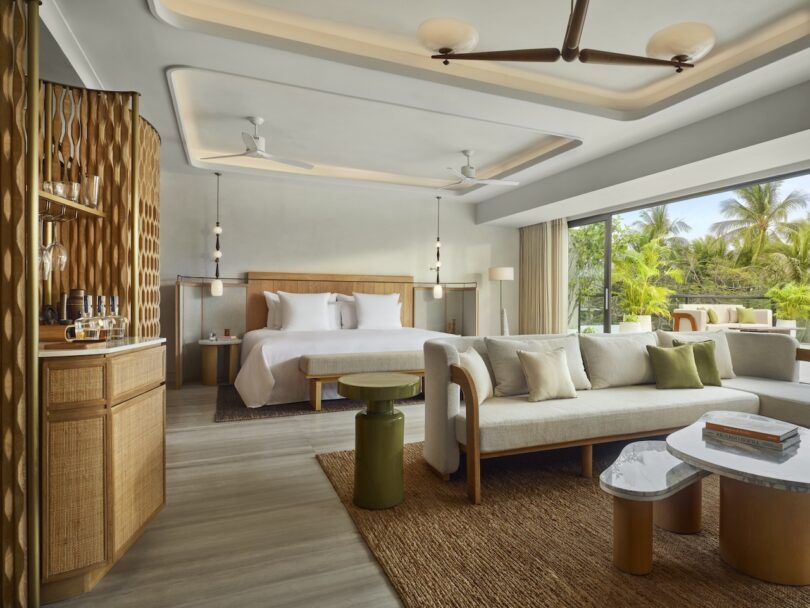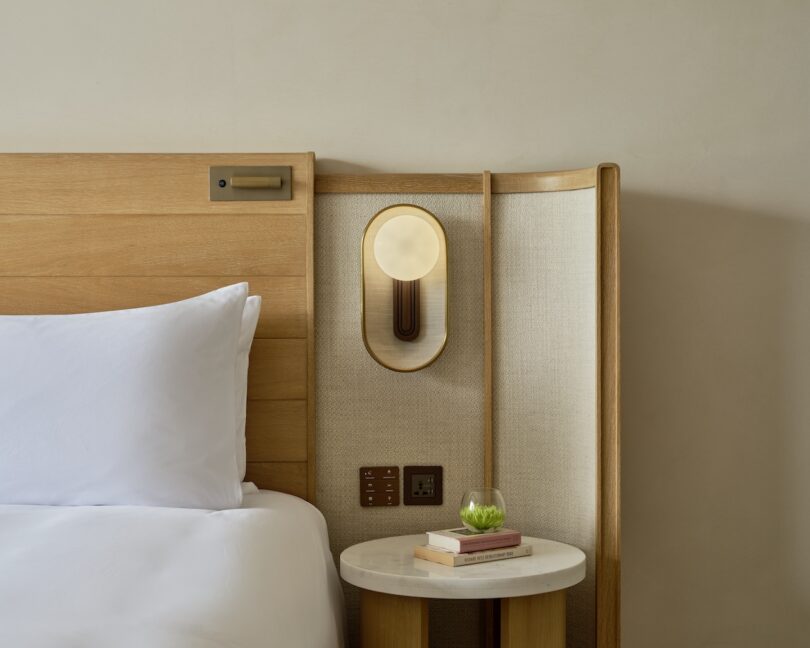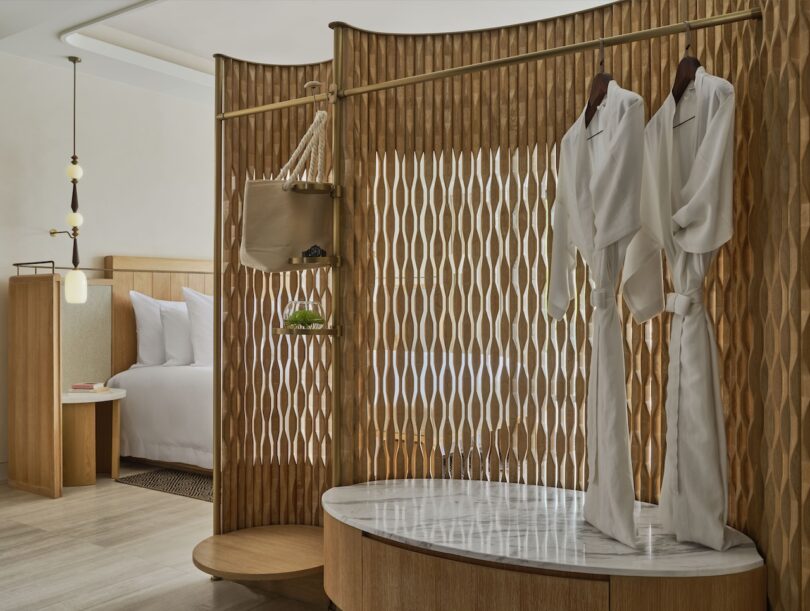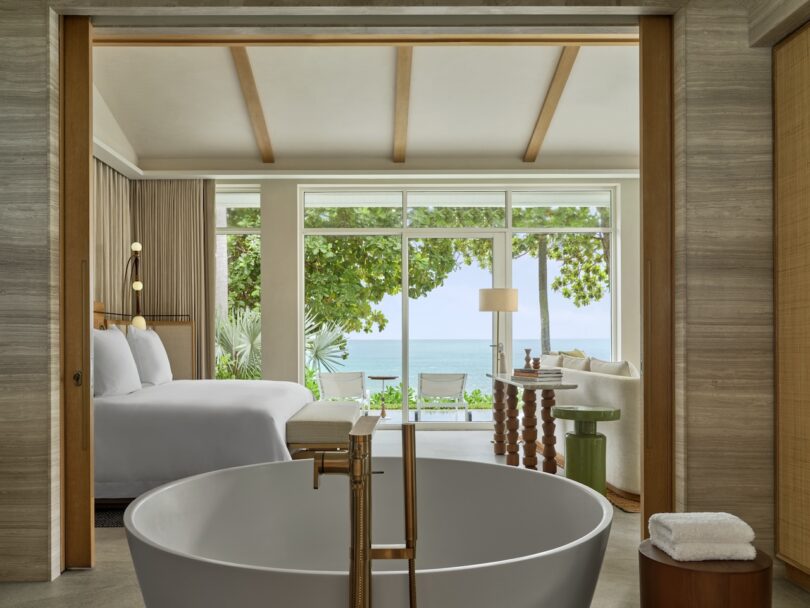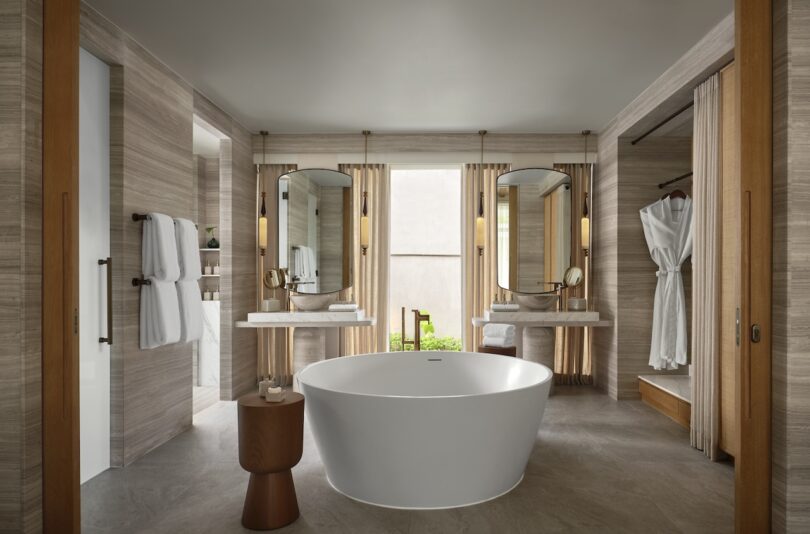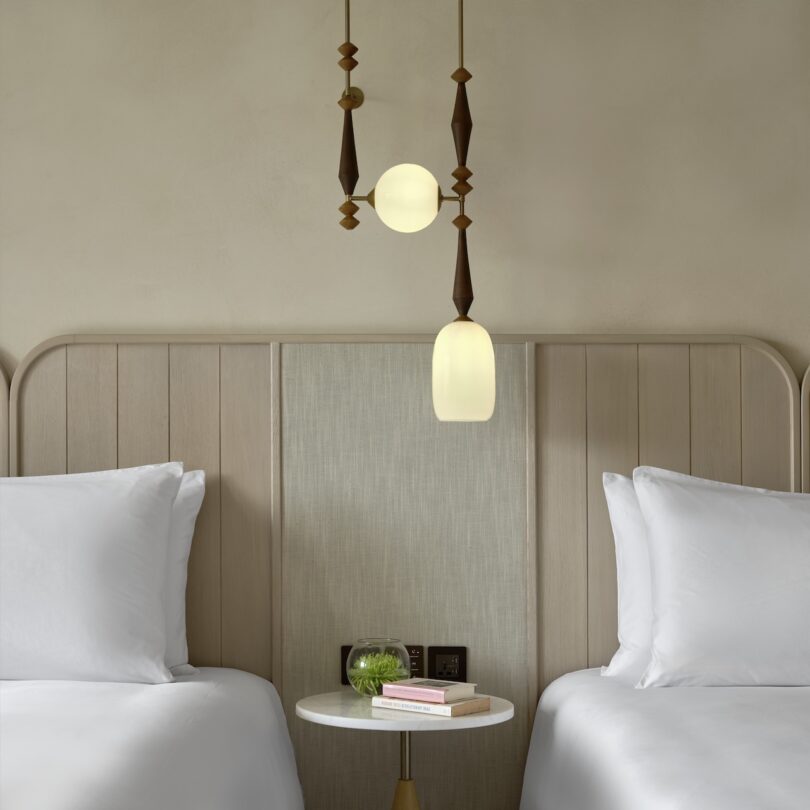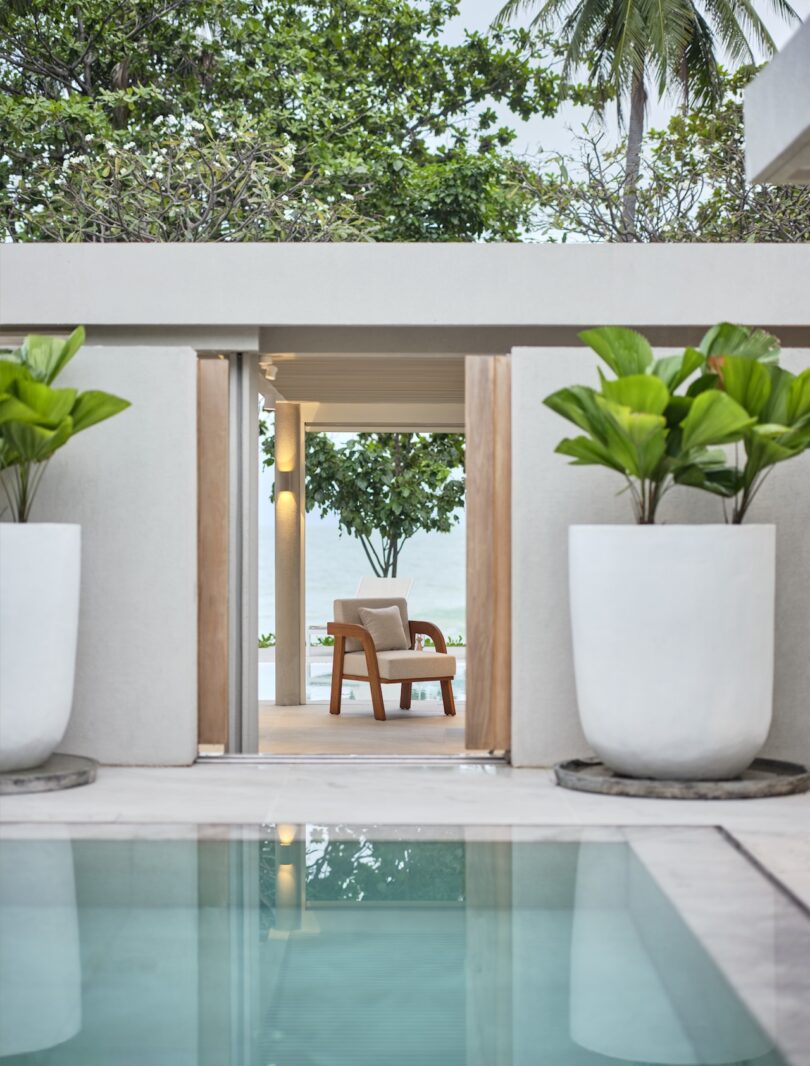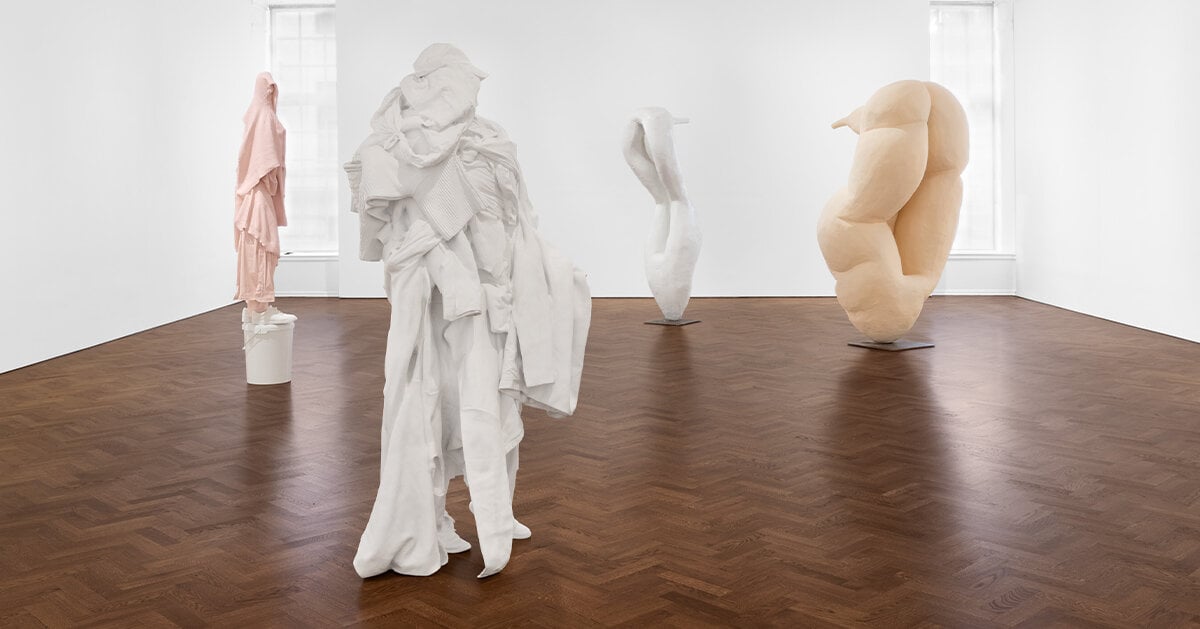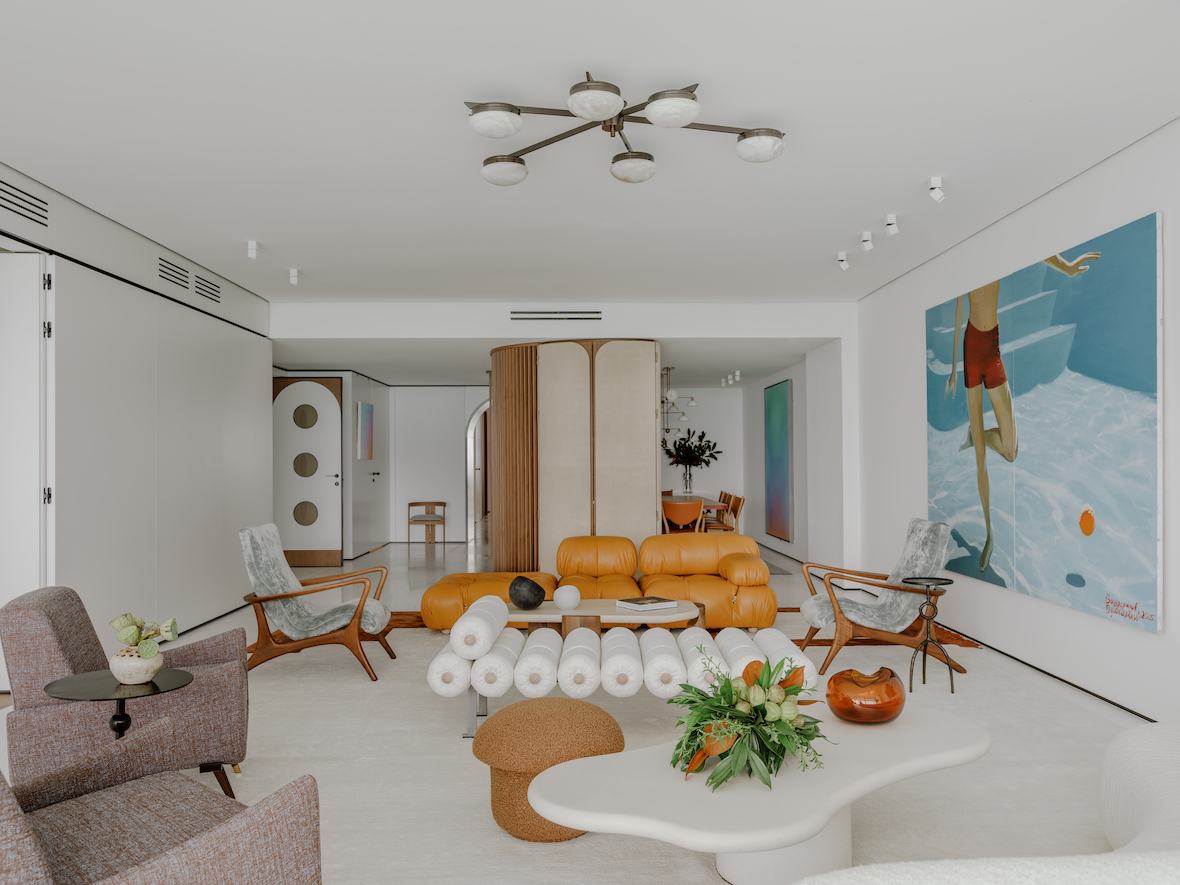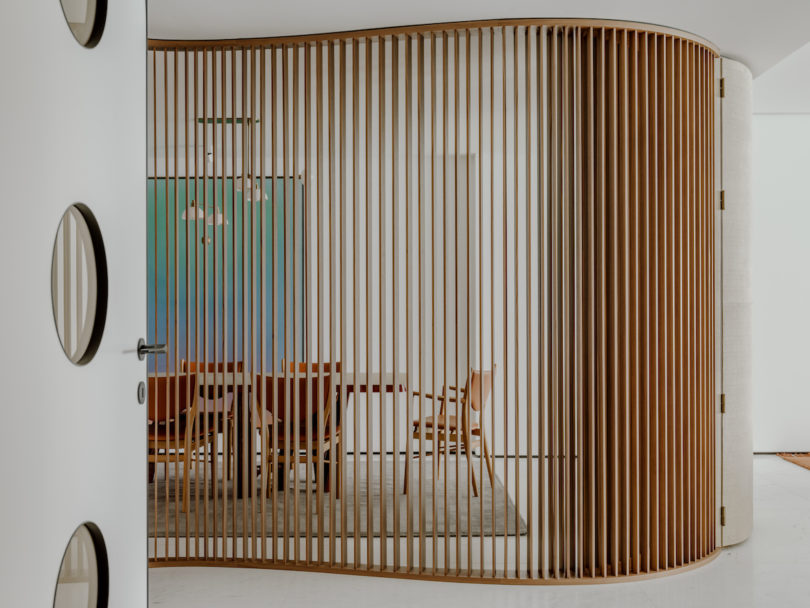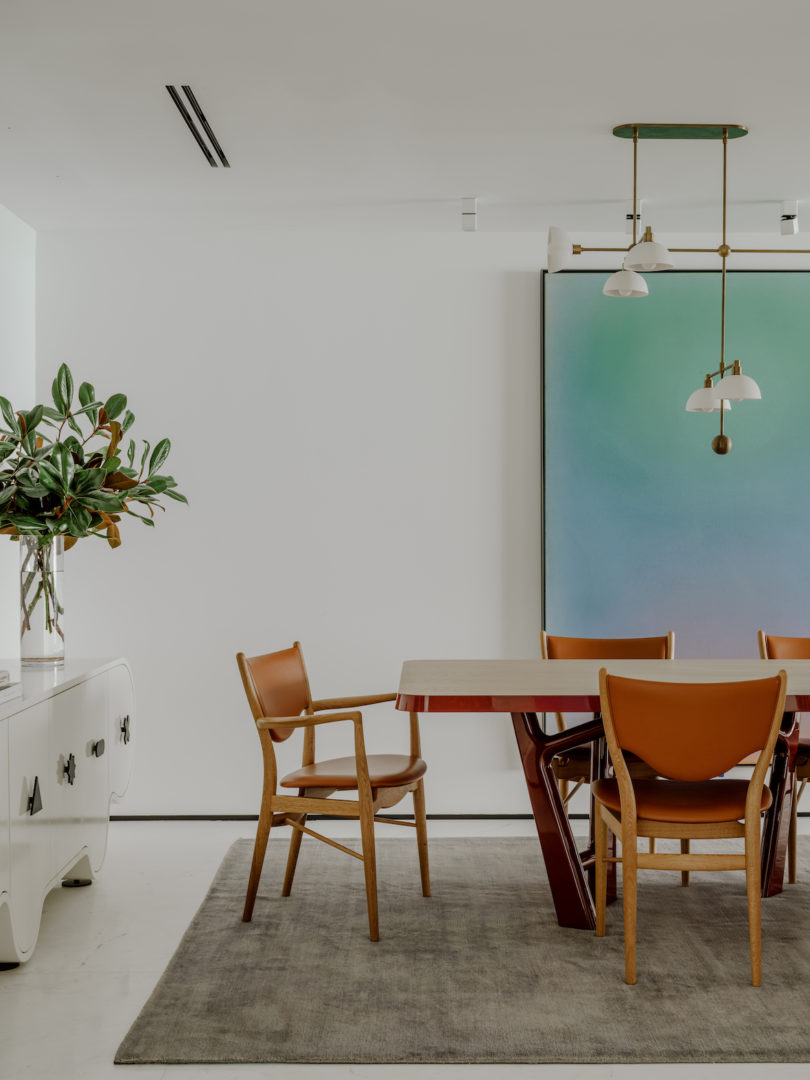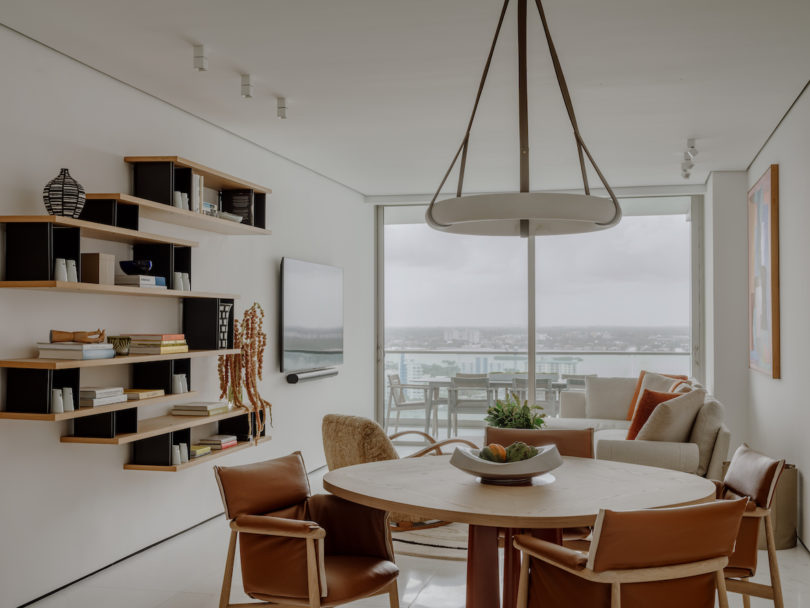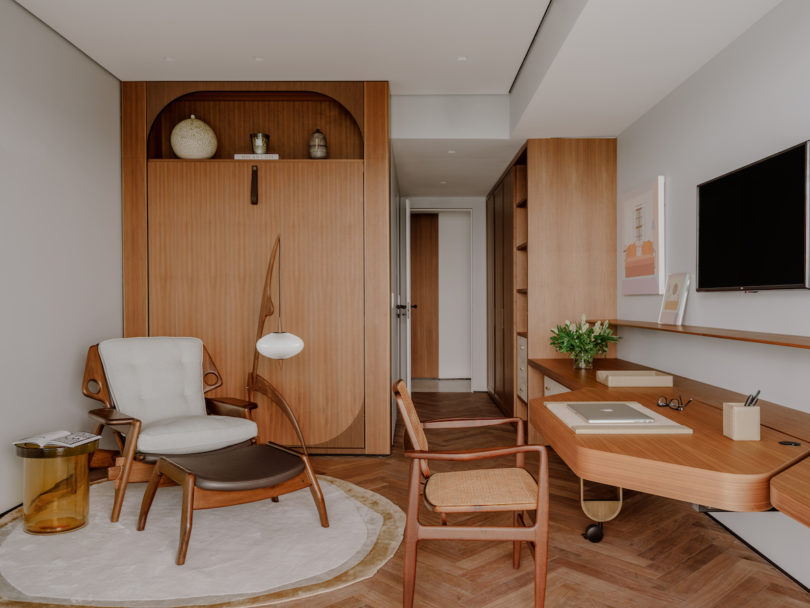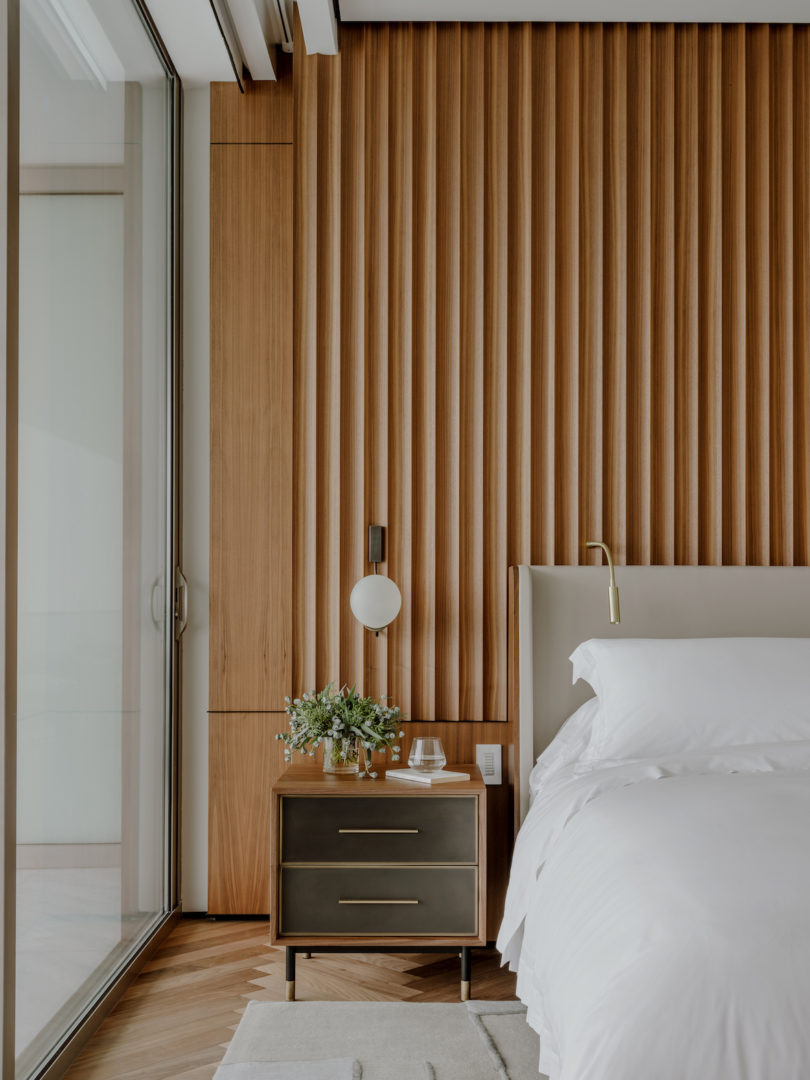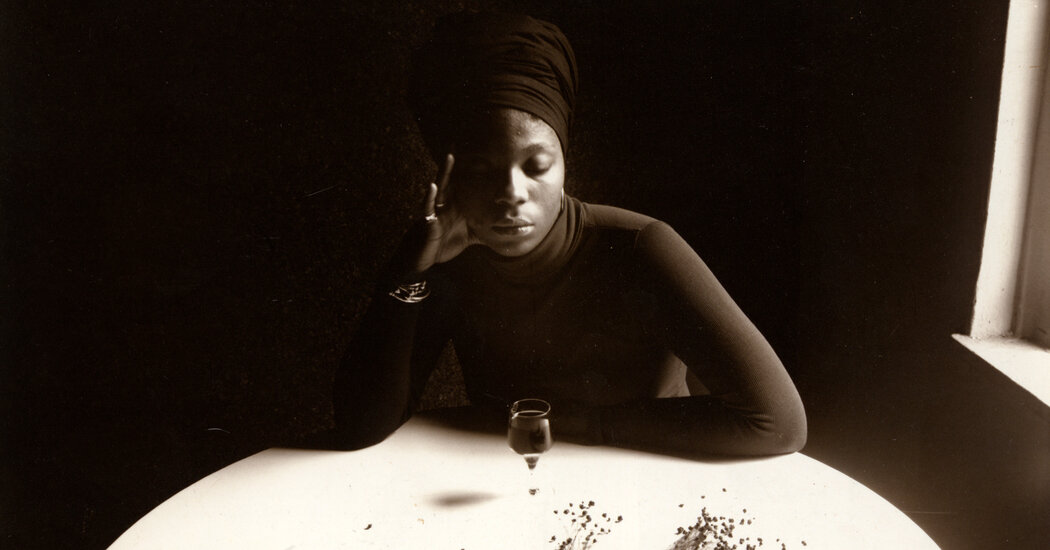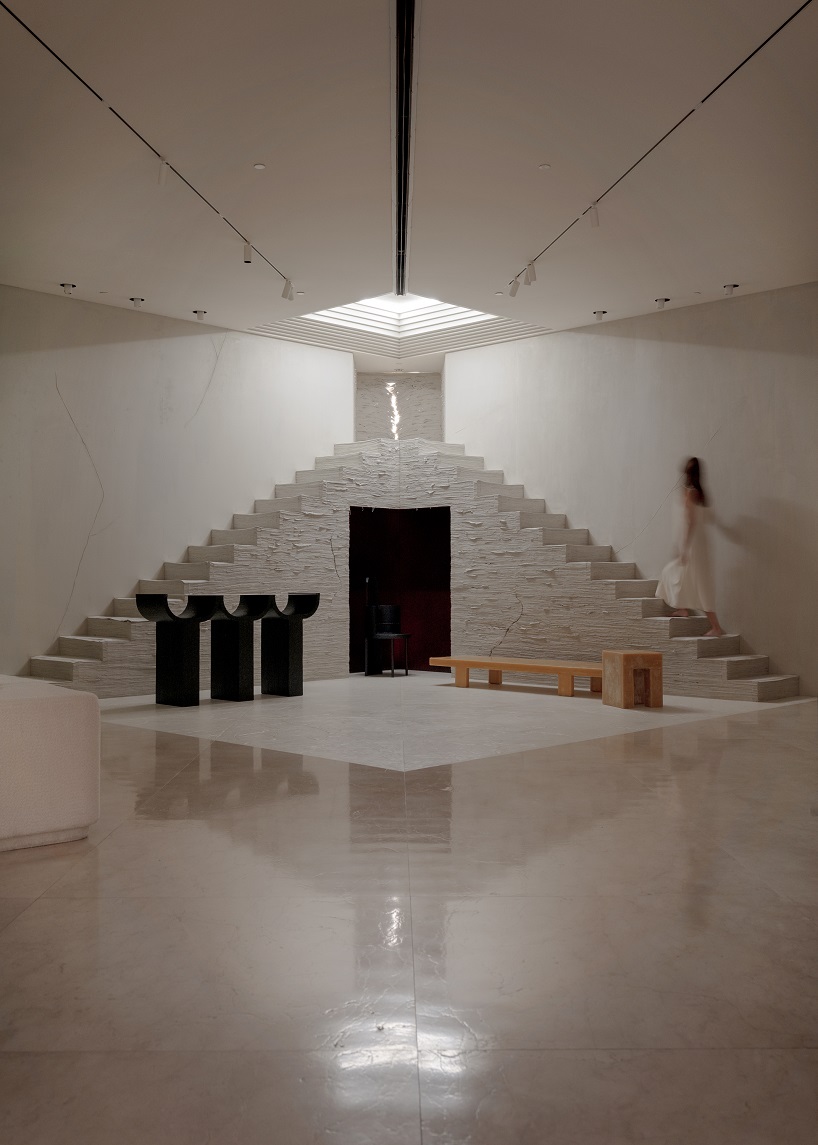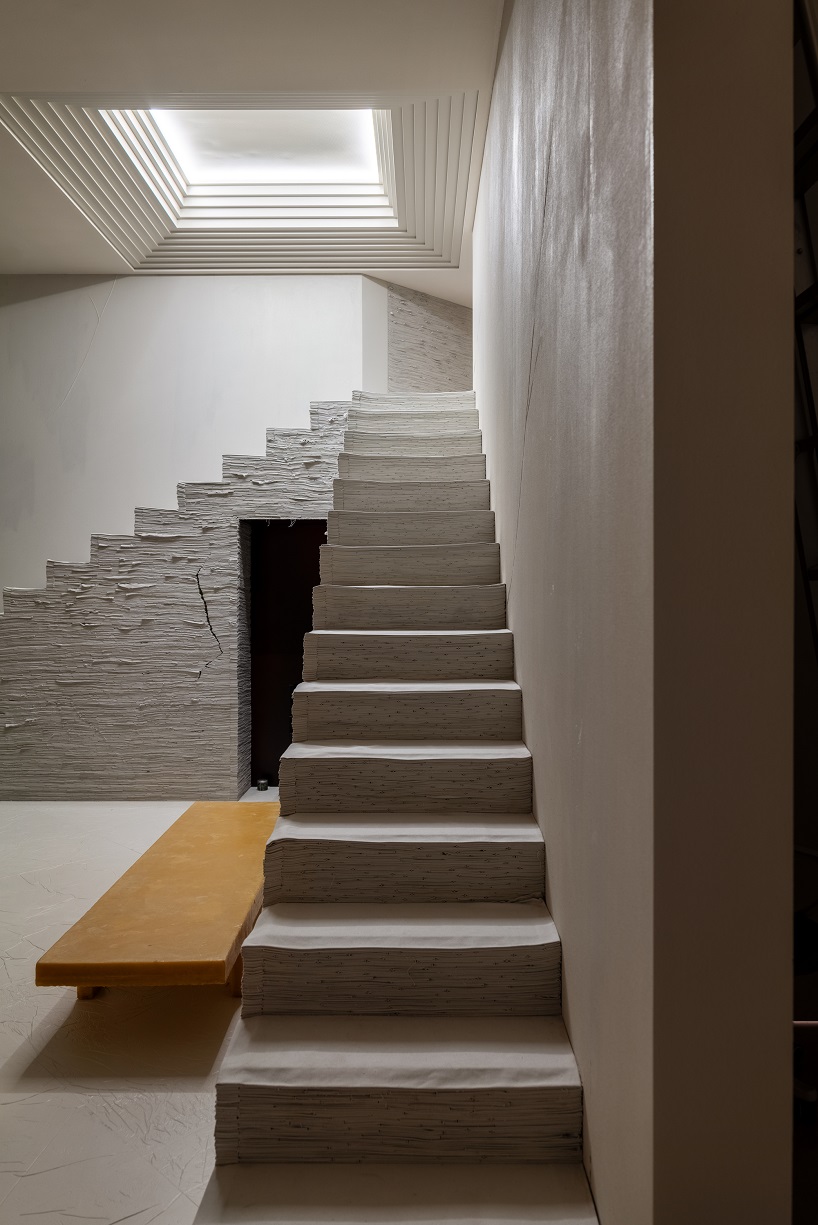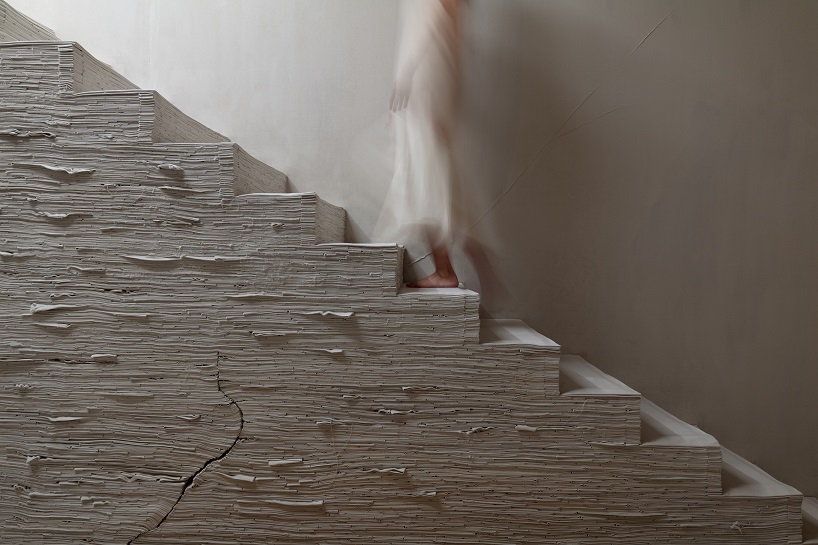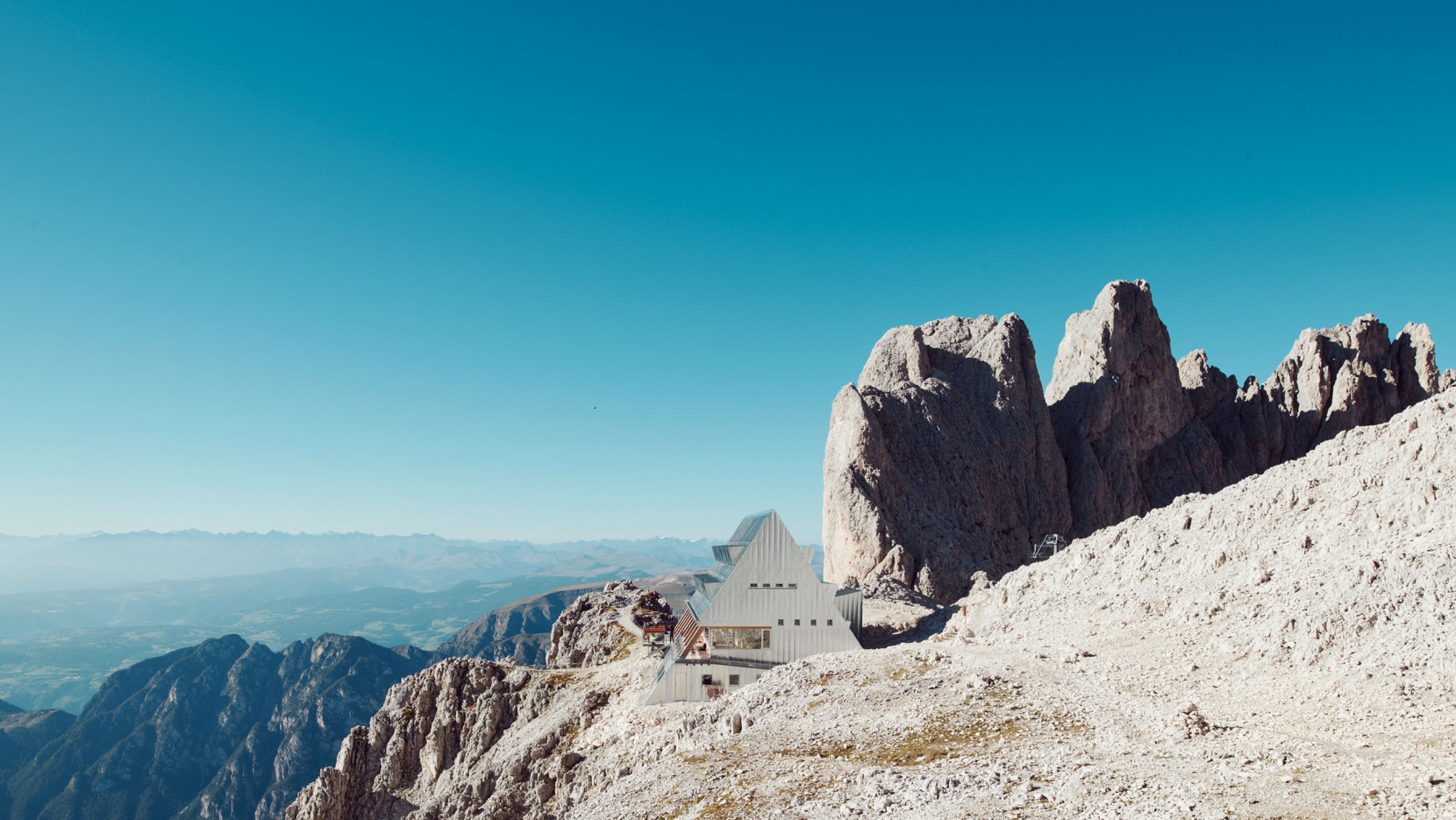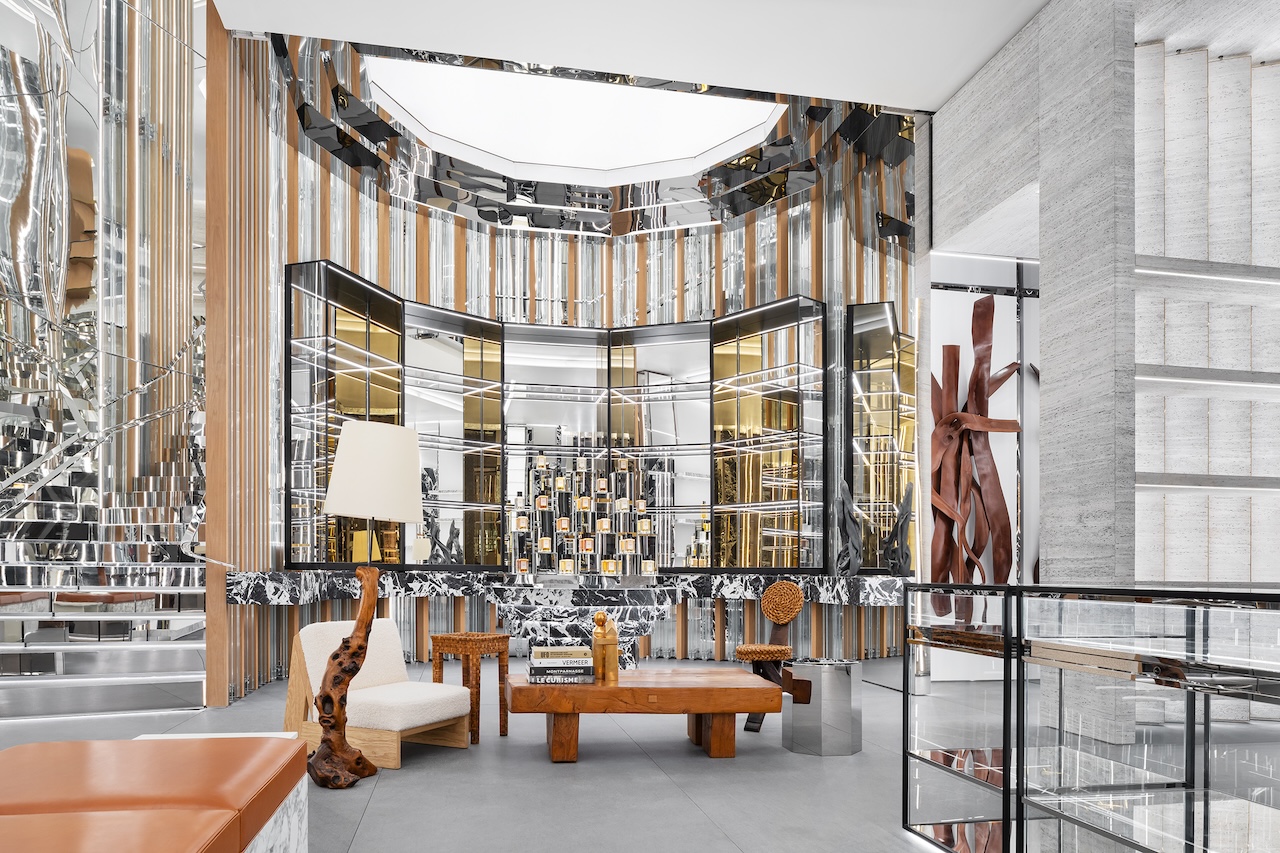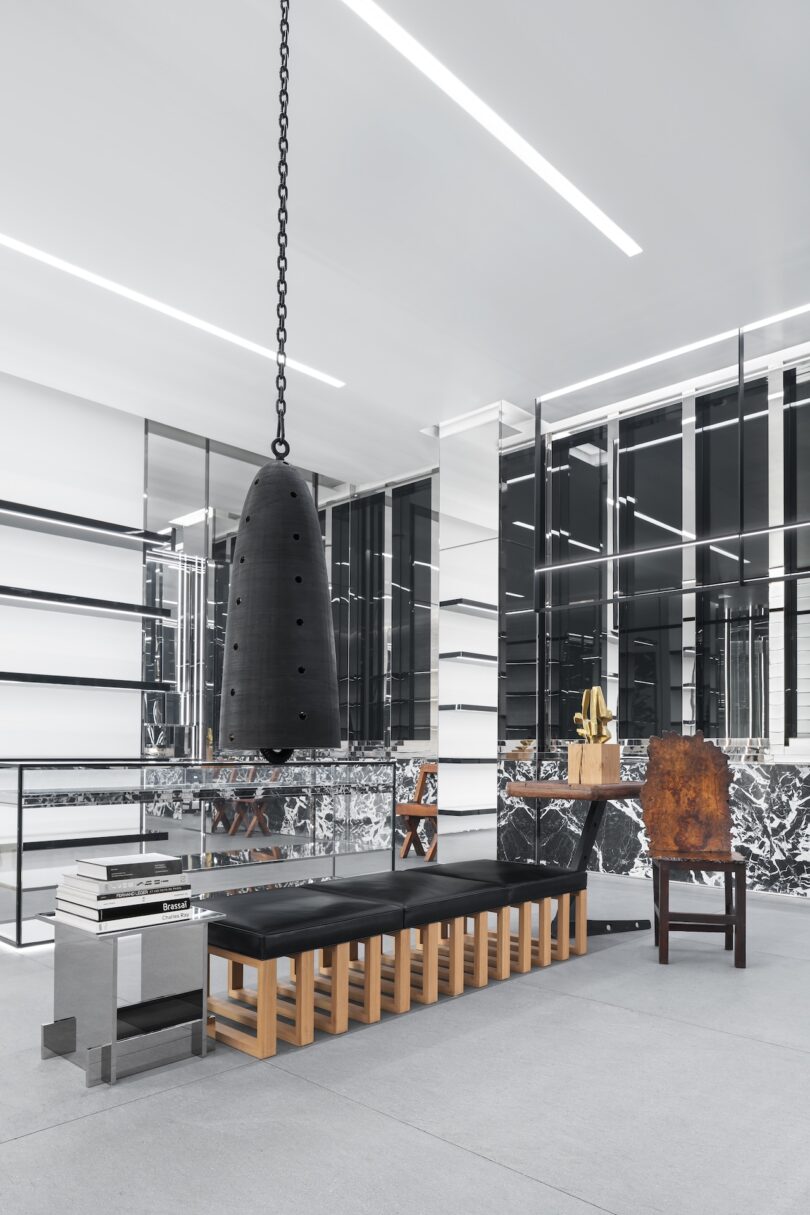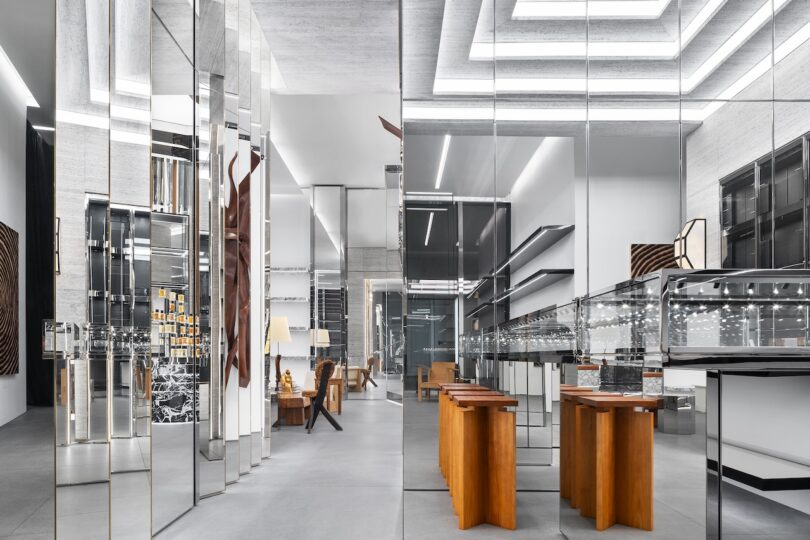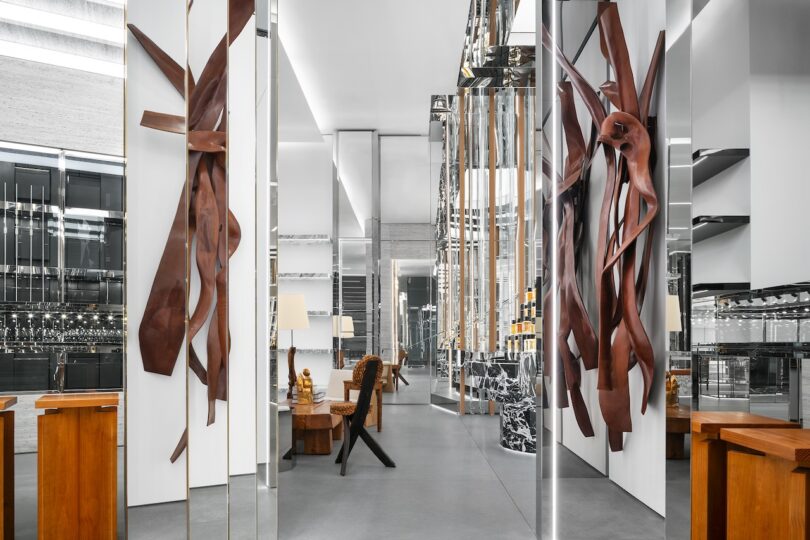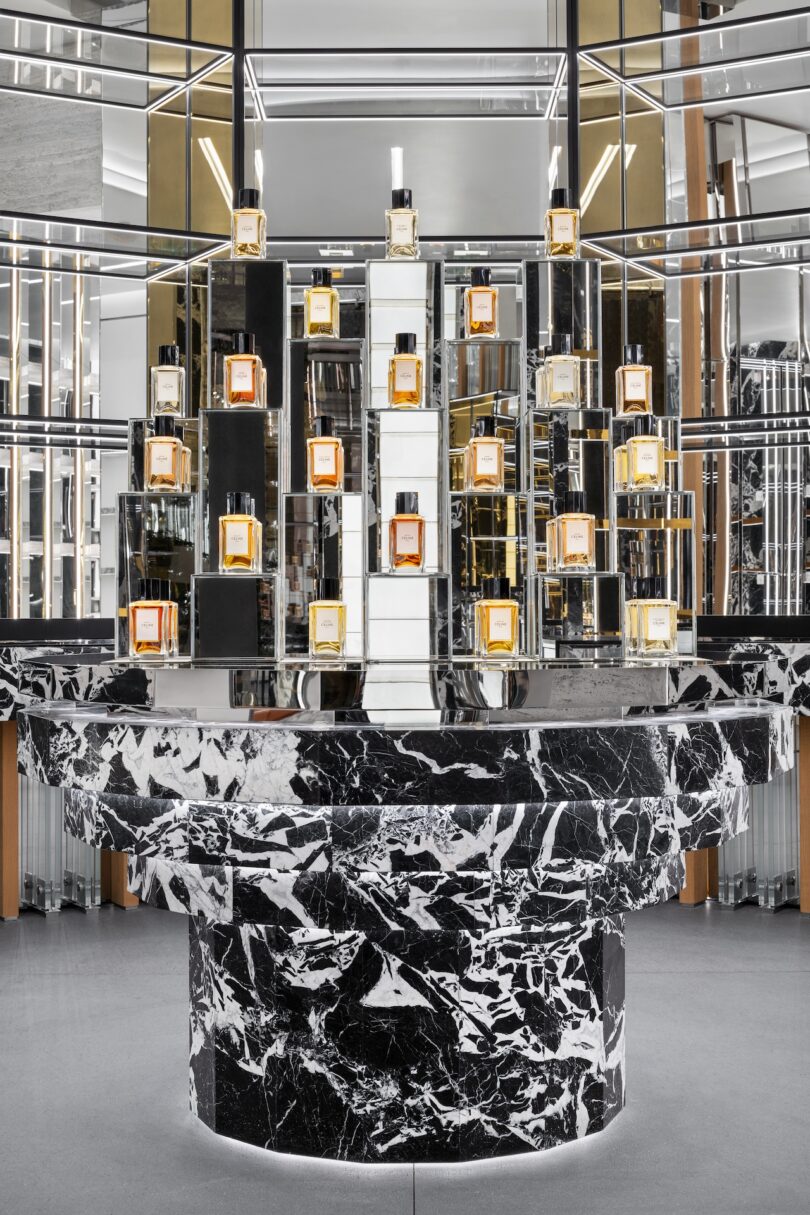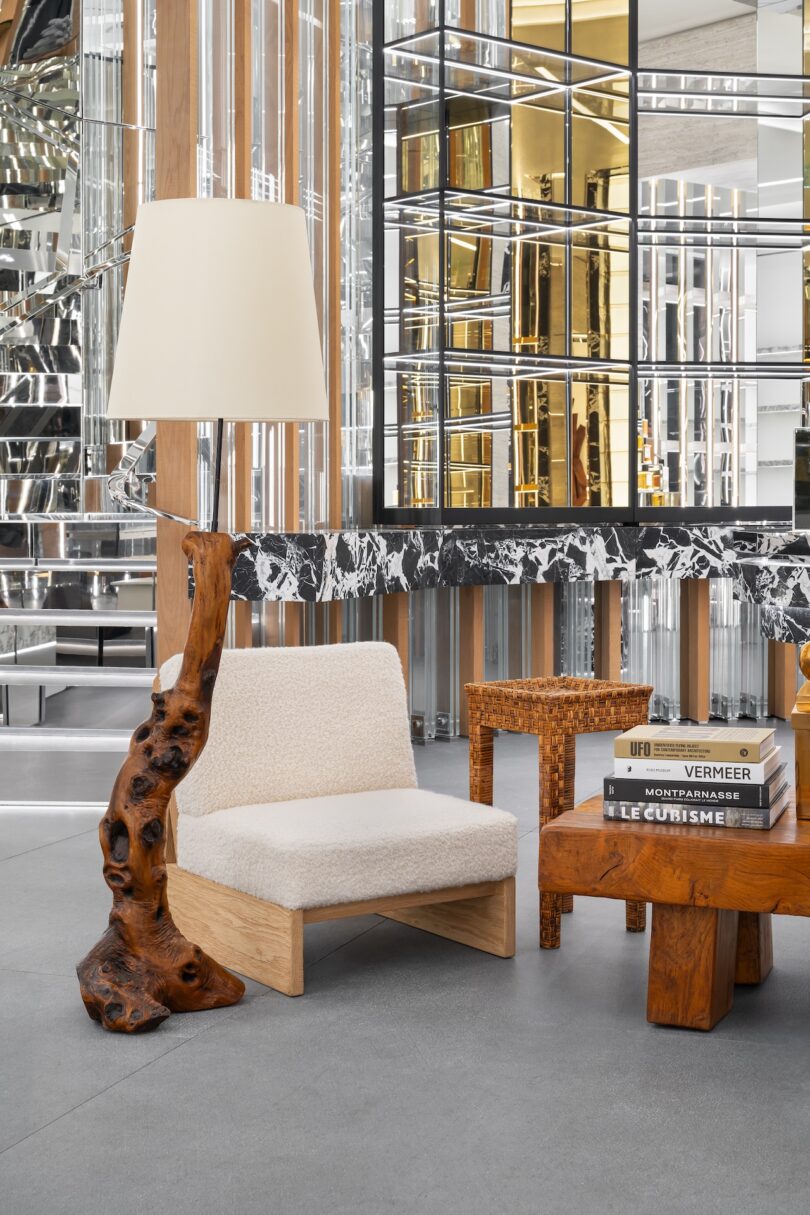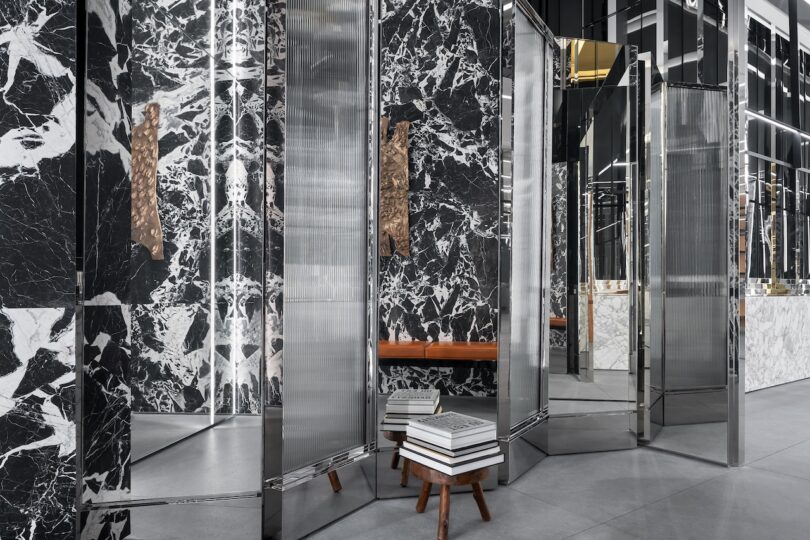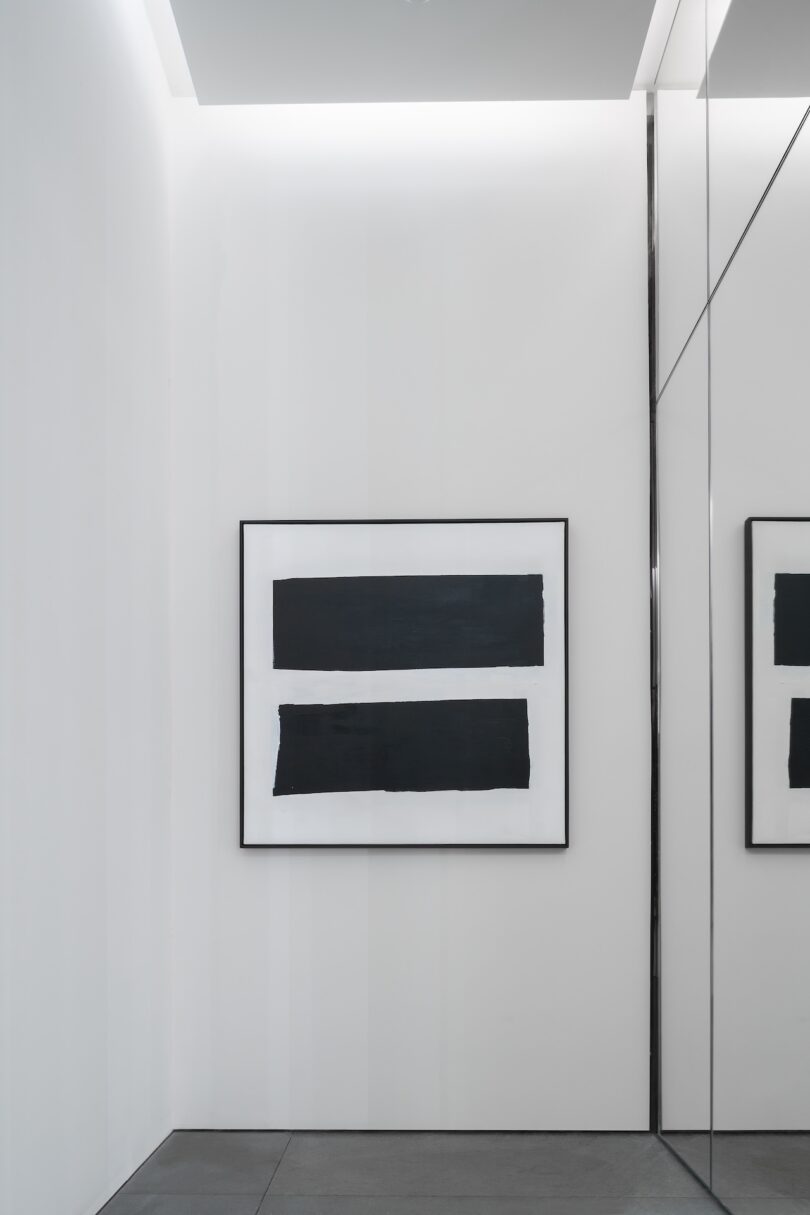new erwin wurm sculptures land at Thaddaeus Ropac London
Thaddaeus Ropac London presents Surrogates, an exhibition of new sculptures by Austrian artist Erwin Wurm, including three series of works shown for the first time: Paradise, Mind Bubbles, and Dreamers. On view concurrently with the artist’s major institutional survey at Yorkshire Sculpture Park in Wakefield, the exhibition features painted metal and epoxy resin sculptures alongside key developments in the continuation of his iconic One Minute Sculptures. Together, the works assembled embody Wurm’s characteristically expansive approach to sculpture as he disrupts traditional distinctions between subject and object, the human and the non-human, spectator and participant.
installation view of Surrogates by Erwin Wurm | all images courtesy Galerie Thaddaeus Ropac London
surrogates: exploring clothes and shoes as second skin
Across Surrogates by Erwin Wurm, the familiar is rendered unfamiliar through the artist‘s playful treatment of the sculptural principles of ‘two- and three-dimensionality, mass, volume, skin and surface, movement and time.’ Just as he has previously added volume to cars and houses to reconfigure our relationship to the objects as capitalist status symbols, here, the form of a high-heeled shoe is distorted almost beyond recognition. The heel of the shoe raises the height of an individual in what the artist describes as ‘an act of social play’. With its new swollen appearance – emphasized by the peachy color of one iteration of the sculpture – the form assumes a flesh-like quality that destabilizes ontological boundaries between what is worn on the body and the body itself.
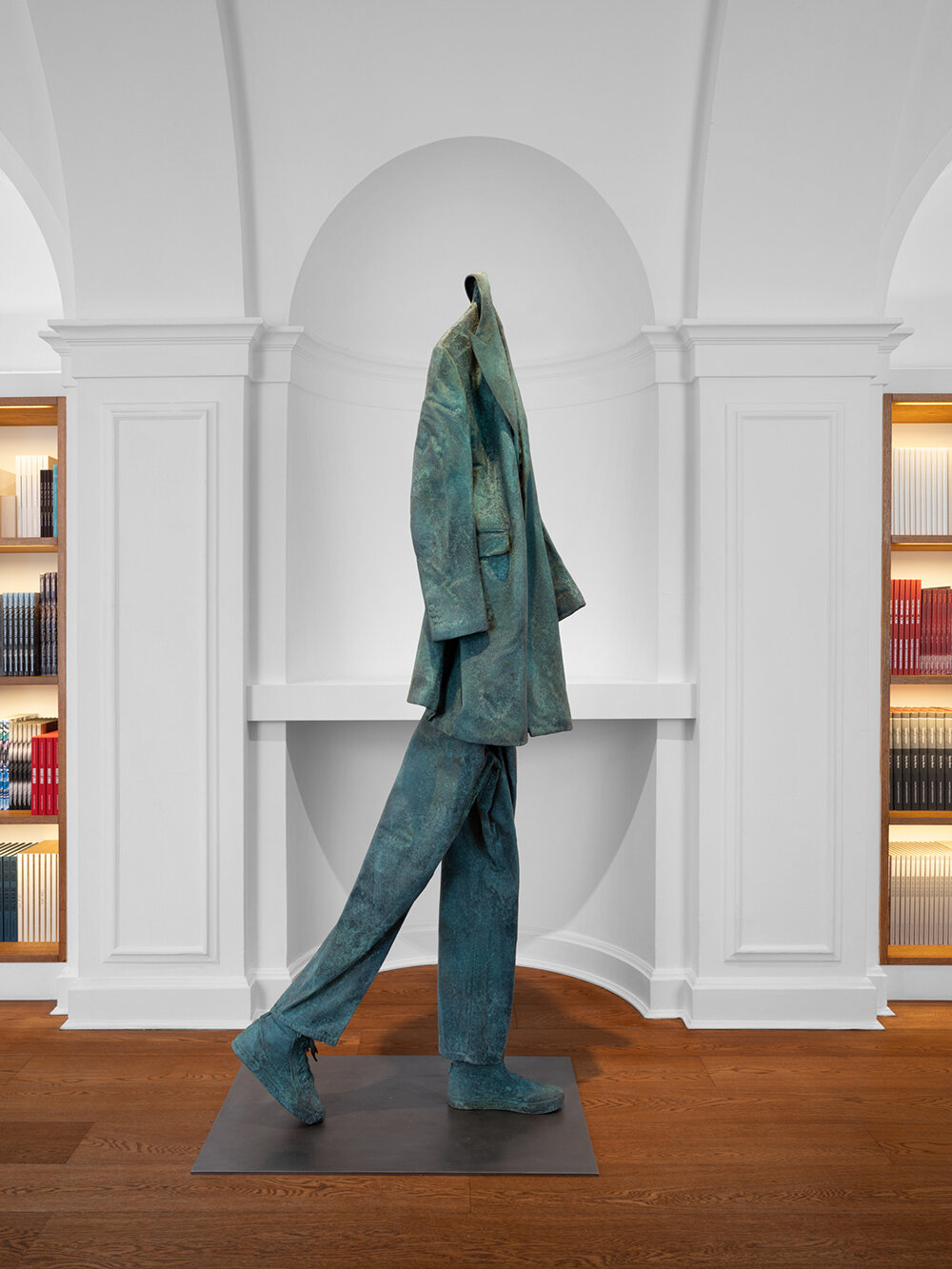
Walking (Substitutes), 2024 Bronze, patina; 180kg, 205 x 30 x 85 cm; Ed. 1 of 3 + 2 AP
Clothing has been a critical source of inspiration for Erwin Wurm since the late 1980s when an abundance of second-hand garments near his then-studio prompted extensive experimentation with worn objects. ‘Clothes are our second skin, a shell that separates our bodies from the outside world,’ he says. Coupled with his investigation into how volume might be articulated, as inspired by his observation that classical bronze sculptures are hollow, this statement led to the formation of works using thin, skin-like membranes of painted aluminum, as represented in the Surrogates exhibition by his Substitute series (2022–). The Substitutes appear as disembodied figures, composed solely from hollow aluminum garments arranged as though worn by a curiously absent body. The garments are deflated in an inversion of the volume added to the shoe in the Paradise series. Their ‘skin’ separates the hidden, internal volume of the sculpture from the external space in which they stand.
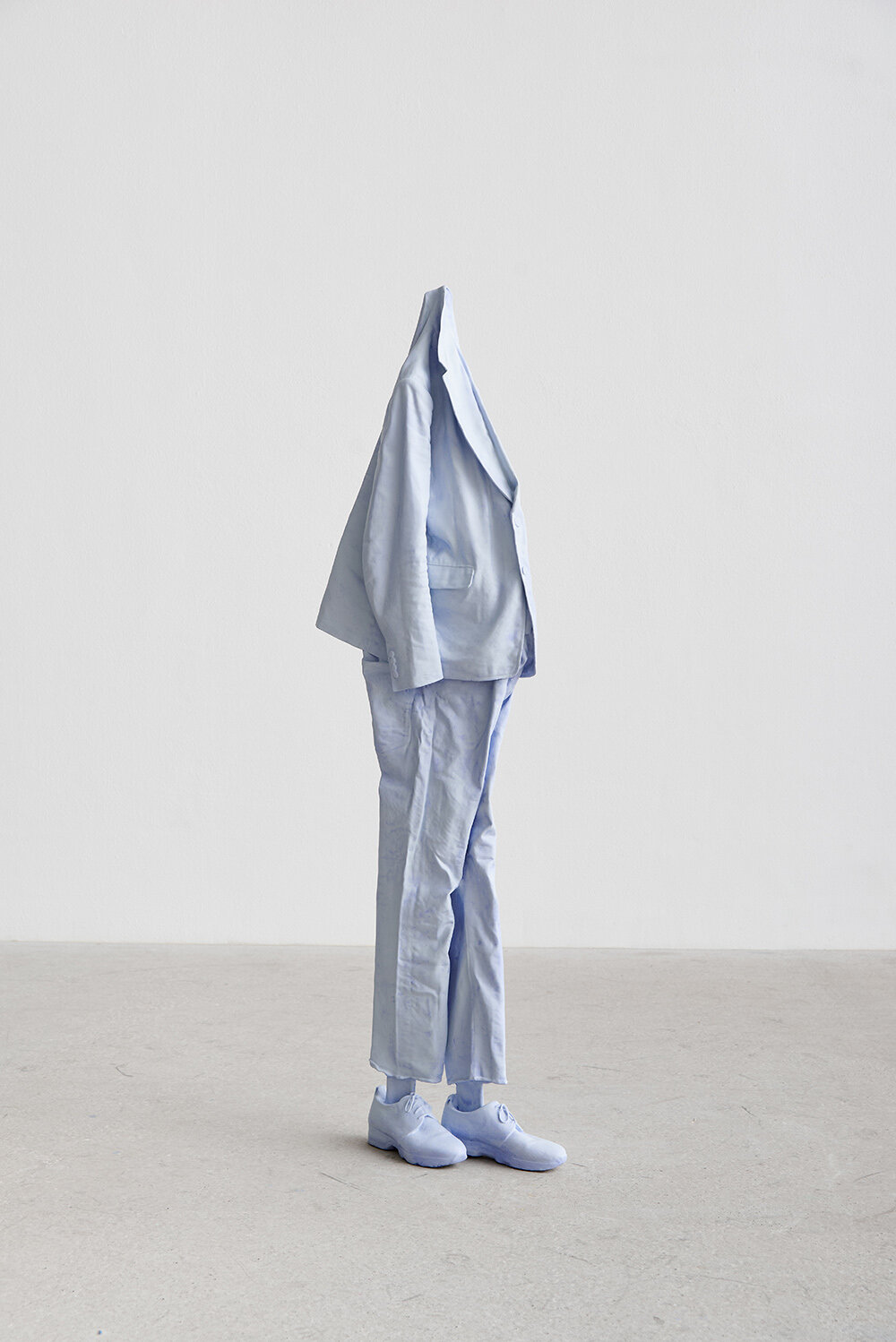
Straight Blue (Substitutes), 2024; aluminium, acrylic paint; 53kg, 190 x 22 x 60 cm; Ed. 1 of 3 + 2 AP | image © Markus Gradwohl
The garments, poses, and (often monochromatic) color palettes highlight the social values we might ascribe to what an individual chooses to wear. The sculptures become ‘substitutes’ or ‘surrogates’ for the human body, whose volume, mass, and form are defined by the ‘second skin’ of the aluminum clothes. As is characteristic of Erwin Wurm’s practice and encapsulated in the exhibition title, Surrogates, this idea of substitution acts as a social commentary that cuts through the artist’s often humorous treatment of the objects and rituals of everyday life. He conceives of the disembodied Substitutes as a way to call attention to the role of the individual in the rapidly changing social, political, and environmental conditions of the contemporary world, particularly the potential absence of humanity in post-anthropocentric futures. As Max Hollein, art historian and director of the Metropolitan Museum of Art in New York, has said of Wurm, ‘he has succeeded in conveying to a large audience, in a hugely suggestive way, the tragedy of its own social condition.’
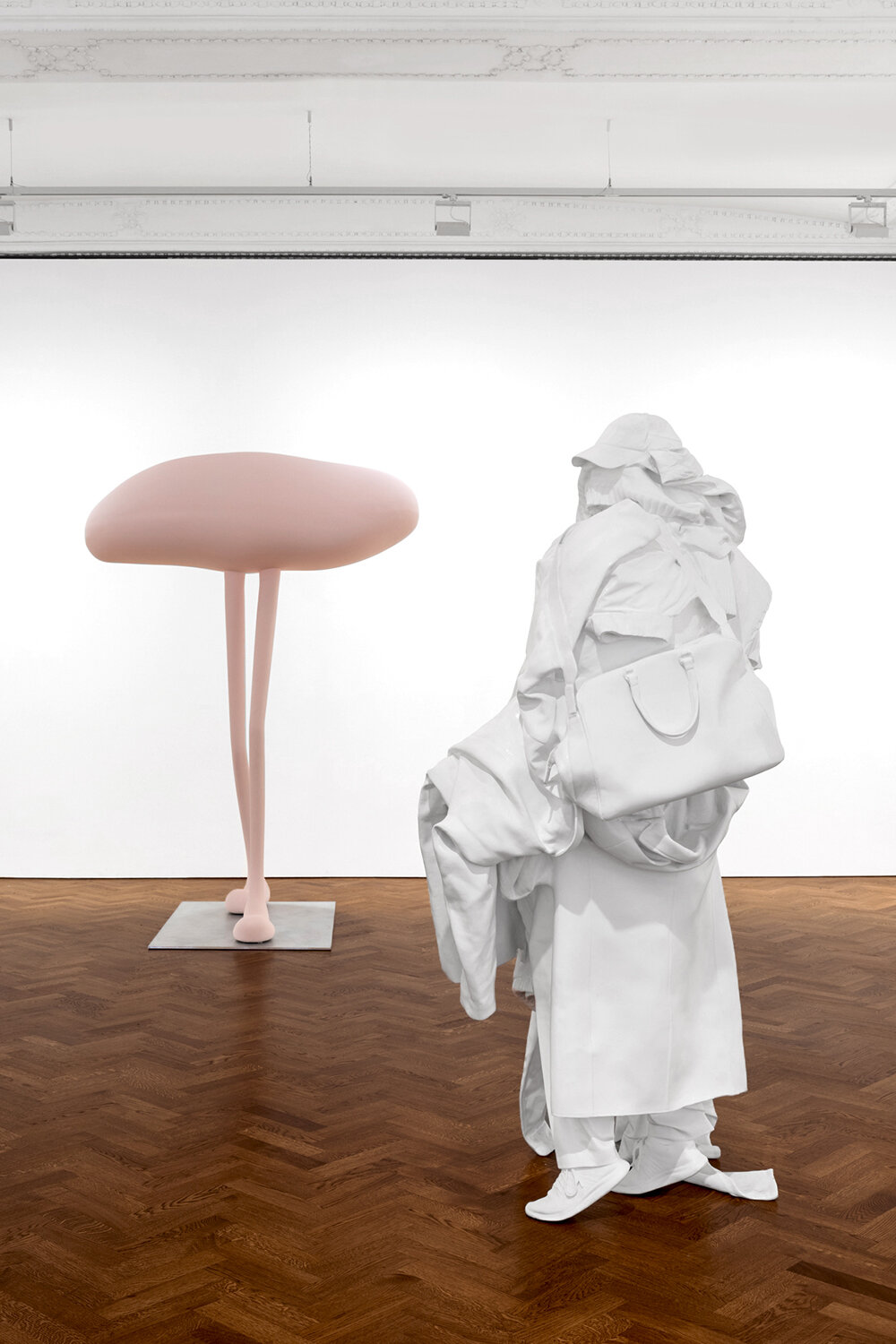
Mind Bubble Walking Pink, 2024; aluminium, paint; 200 kg, 230 x 165 x 125 cm; Ed. 1 of TBC + 2 AP | Balzac (After Rodin), 2023 Aluminium, paint; 130kg, 185 x 100 x 70 cm; Ed. 1 of 3 + 2 AP
With the Substitutes, the absurd becomes a tool through which Wurm asks us, in his own words, to ‘look at the world from a different perspective’ and take ‘paradoxical angles’ to imagine parallel realities and alternative ways of being. Asserting his investigative approach to the concept of sculpture within art historical traditions, elsewhere in the exhibition, Wurm uses clothes to build bodily forms in response to two canonical works of art: Donatello’s Penitent Magdalene (1440) and Auguste Rodin’s Monument to Balzac (1891–97). Wurm explains that with Balzac (2023). ‘I wanted to create a figure where you cannot see a human being, but you get this idea of a person’ emerging from the piled clothes and designer bags. Titled following his observation that the sculpture evoked the semi-abstract monolith of Rodin’s homage to the French novelist Honoré de Balzac, Wurm was inspired by the myth that the French sculptor soaked the writer’s dressing gown in plaster to dress his monumental form.
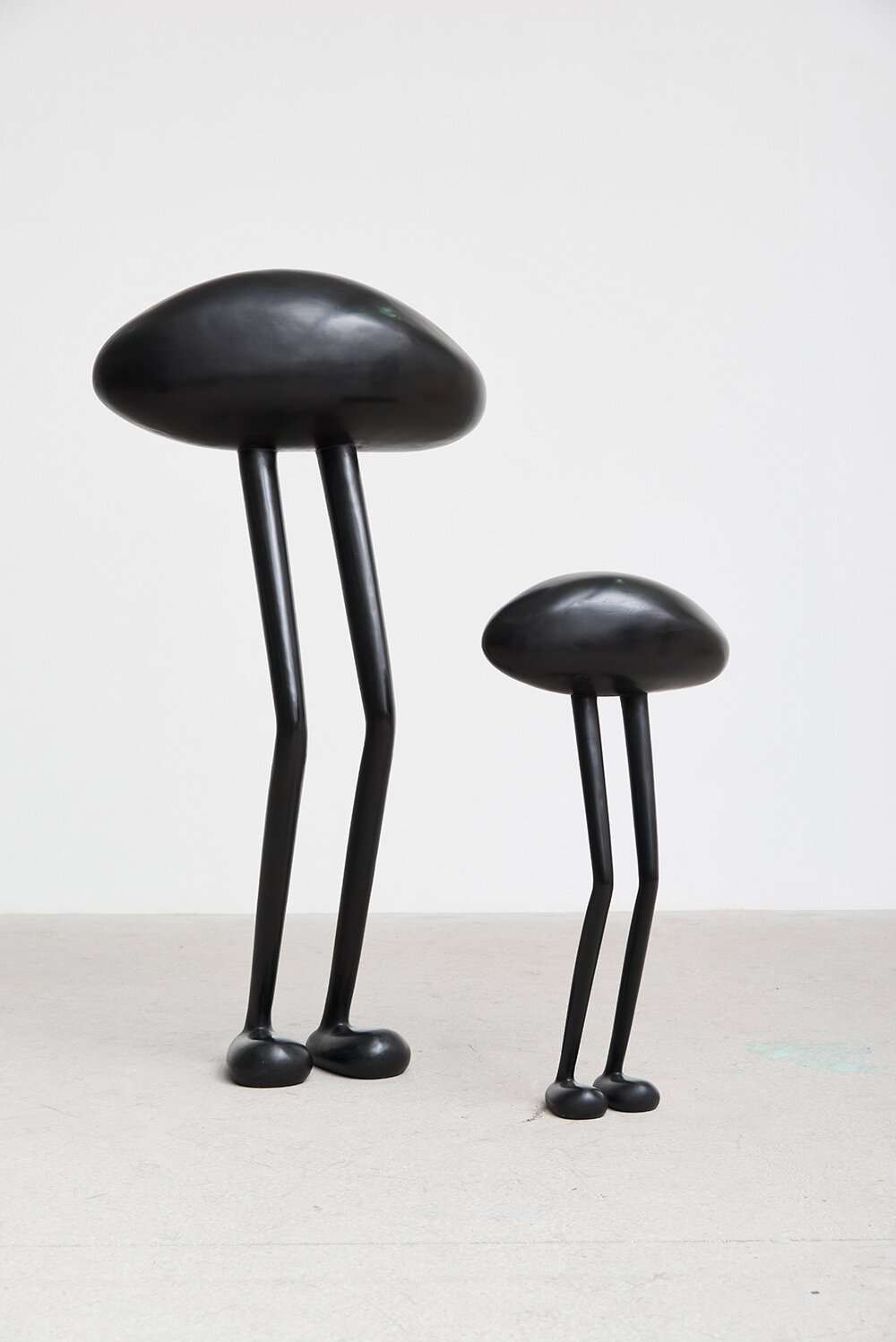
Mind Bubble Standing, 2024 Bronze, patina; 150kg; 190 x 100 x 50 cm; Ed. 1 of 3 + 2 AP | Mind Bubble Standing Small, 2024 Bronze, patina; 46kg, 120 x 60 x 32 cm; Ed. 1 of 5 + 2 AP | image © Markus Gradwohl
Similarly, Repentance (After Donatello) (2023) emulates the folded robe that enshrouds the emaciated body of Mary Magdalene in the Italian Renaissance sculptor’s wooden original. Rendered in painted aluminium, the cascade of pale-pink, knitted jumpers is finished with a pair of white trainers standing atop a bucket. As with the Substitutes, the two sculptures reimagine the human body as an absurd configuration of clothing, responding to the central issue of self-representation in contemporary society. ‘I am interested in everyday life. All the materials surrounding me can be helpful, and the objects and topics can be involved in modern society. My work speaks about the whole entity of a human being: the physical, the spiritual, the psychological, and the political.’
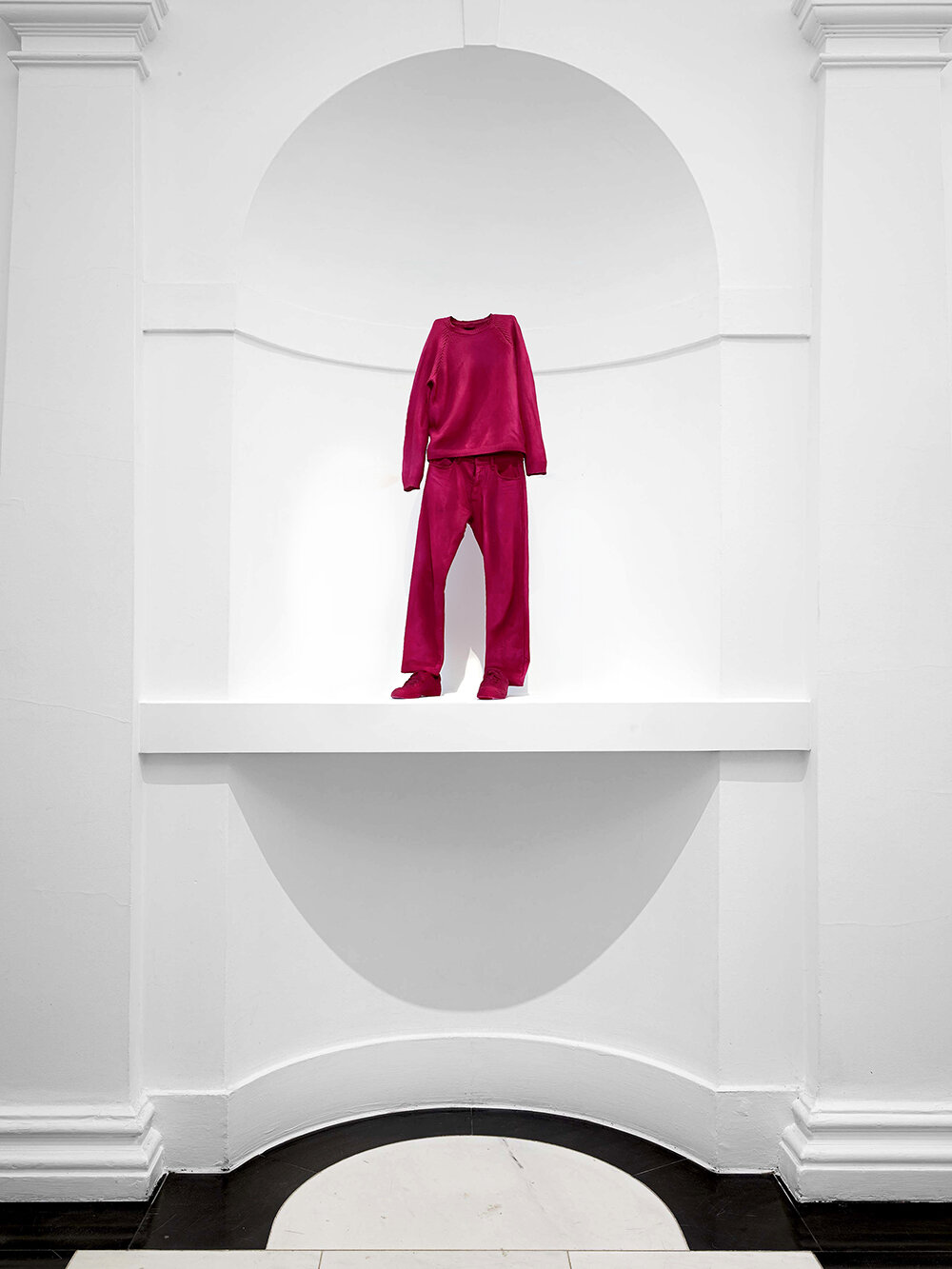
Breeze Small (Substitutes), 2022 Aluminium, paint, 90 x 32 x 16 cm, Ed. 2 of 5 + 2 AP
tapping into the human psyche and unconscious
Addressing another aspect of the human condition, the Dreamers and Mind Bubbles (both 2024) give form to psychological thought through bodily associations. In the Dreamers, realistic human limbs suspend oversized white pillows above them in playful references to the unconscious. ‘Turning our reality upside down’ through his absurd fusion of bodies and pillows, Wurm indirectly evokes the writing of Austrian psychoanalyst Sigmund Freud and The Interpretation of Dreams (1899). In turn, the Mind Bubbles place ovular forms atop spindly, cartoonish legs in anthropomorphic imaginings of the thought bubbles found in comic strips. Wurm describes them as ‘a symbol of an idea or a specific thought, which is not described’. Building upon his earlier Hypnosis series (2007–8), in which the potato-like forms have realistic human legs, the aluminum sculptures evoke conscious thought. They gesture to the cerebral aspect of his participatory works, in which he often asks individuals to reflect upon their mental states or the theories of great philosophers as they perform a prescribed action.
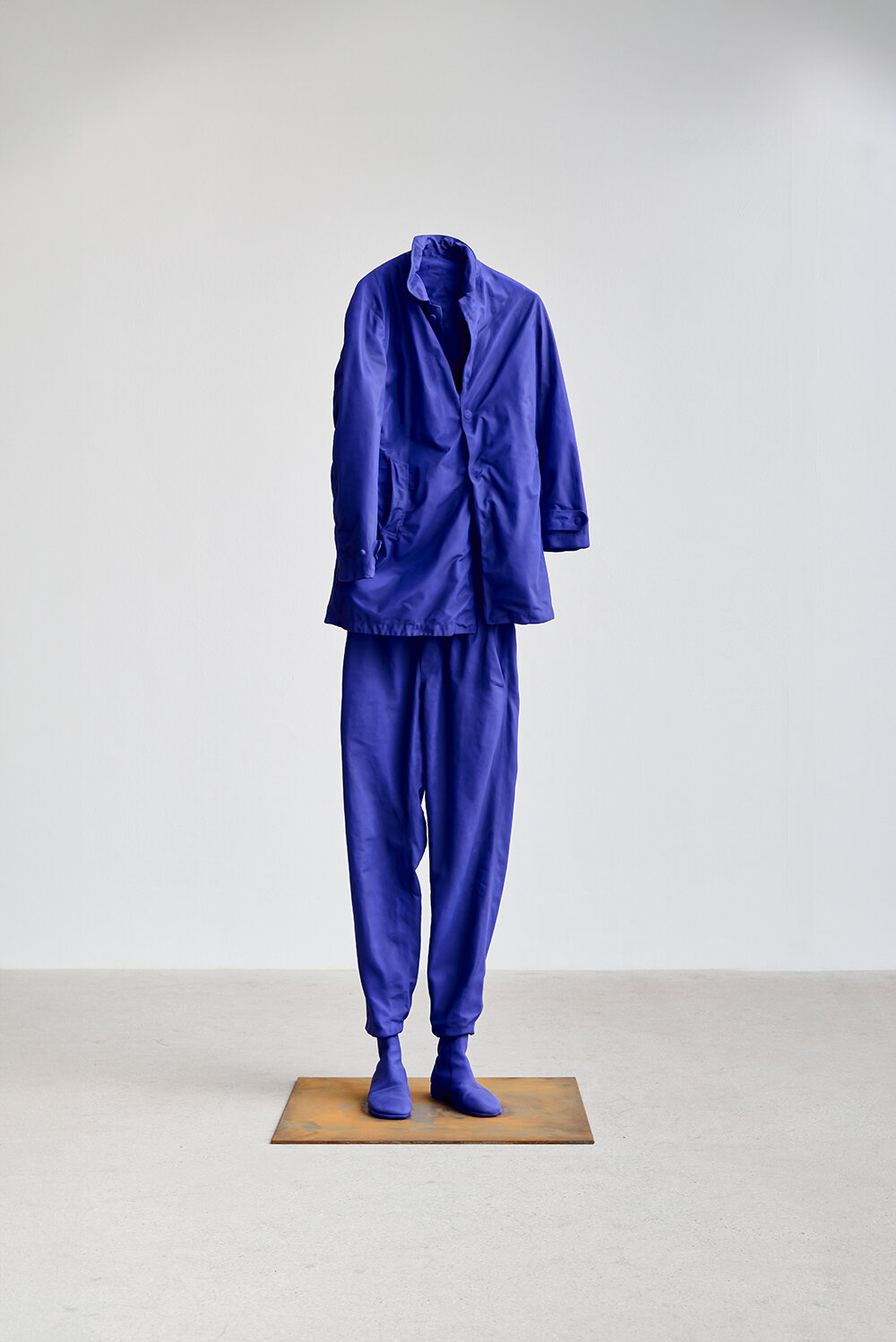
Still Blue (Substitutes), 2024 Aluminium, acrylic paint; 65kg 175 x 55 x 45 cm; Ed. 1 of 3 + 2 AP
image © Markus Gradwohl
These new works at Surrogates are presented alongside a group of the artist’s One Minute Sculptures, which epitomize his innovative approach to time-based, participatory sculpture. Begun in 1996–97, they consist of written or drawn instructions that individuals typically perform on a plinth for up to one minute. Often incorporating everyday objects, they transform the visitor from a spectator into a participant, destabilizing traditional art engagement modes. Installed in Ely House, what Wurm describes as a ‘new chapter’ in the One Minute Sculptures marks a fundamental evolution in the series. Abstract sculptural elements are introduced to each work, which remains present even when a participant does not activate them. Giving the works new life outside the temporal duration of their performance, this development demonstrates Erwin Wurm’s enduring impetus towards artistic evolution, which he has sustained throughout his long and successful artmaking career.
